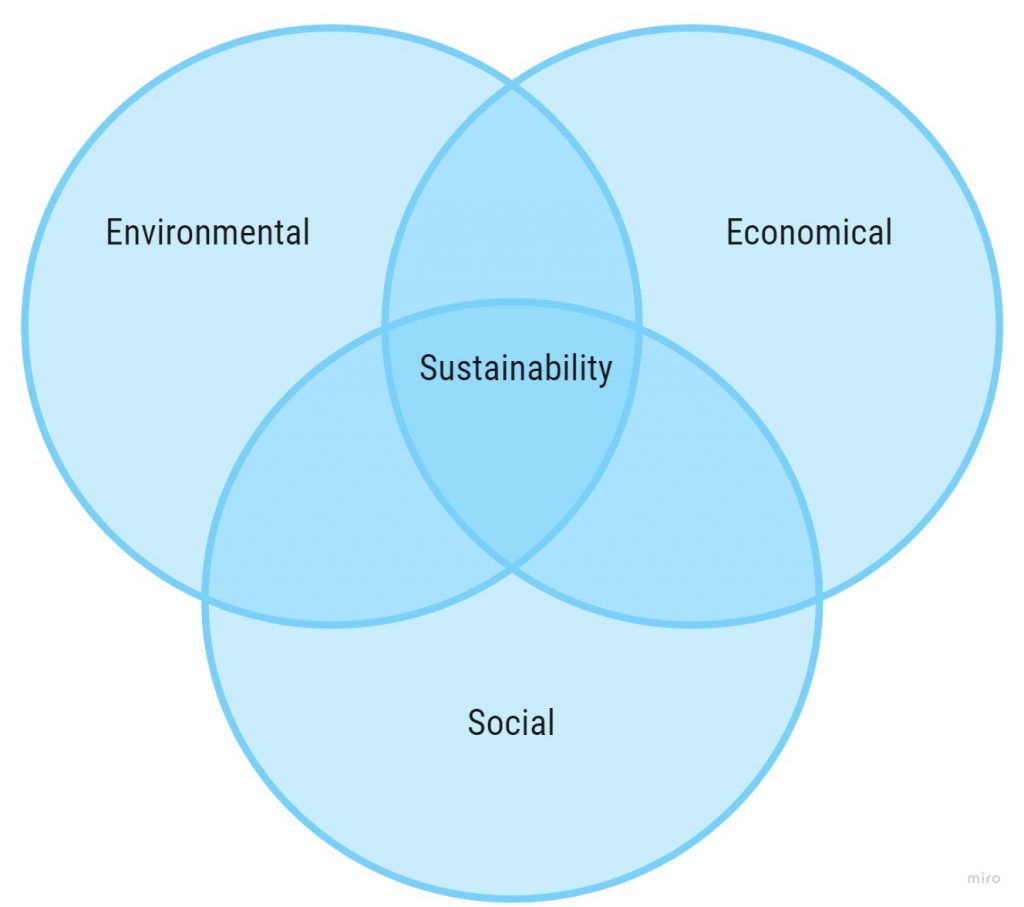Sustainability
We believe that is important to focus on sustainability when enabling the capabilities of refugees. In order to achieve this, the United Nations Commision for Asia and the Pacific uses a three-part model for sustainable development, in combination with a set of 17 sustainable development goals. The three-part model are not intended to be achieved separately, they are instead intended to be three balanced and integrated dimensions of sustainable development. The 17 sustainable development goals are used as a path that guides us to those three balanced and integrated dimensions. One of the applications of the 17 sustainable development goals is, for example, qualitative scenario building. During these building sessions, possible but uncertain futures are imagined, to stimulate stakeholder learning and social innovation. We will use this three-part model approach for to reach sustainable development, while the 17 sustainable development goals are used as norms for our design.

Environmental sustainability can be described as the use of resources, waste, and direct utility . Low greenhouse gas emissions are also a feature of environmental sustainability. These factors in the context of Camp Moria mean that Solar Still should have the least amount of non-degradable waste possible, with resources that are not scarce. 95% of the materials Solar Still contains are biodegradable. On top of that, some parts are also made from organic and reusable materials. This means that our product is environmentally sustainable.
Economic sustainability is generally about creating a maximum profit, with resources that are as cheap and efficient as possible. In the context of Camp Moria, it should be considered that such a setting is more like a developing country. This means that economic sustainability changes. In this case, when designing something sustainable for this specific stakeholder, the goal should be reducing inequality and thus making sure the costs and benefits are in balance. With Solar Still, inequality regarding water can be solved and therefore economic sustainability is reached. The capital cost and operating costs associated with Solar Still have been kept low by prioritising cost-effectiveness and concentration on core functions. These are principles of frugal innovation which guided every step of the design process. This will allow Solar Stills to be manufactured in large enough quantities that every refugee can feasibly be given equal access to the clean water that they provide.
Social sustainability is a less well defined concept and it covers many different aspects. The model for social sustainability used when designing Solar Still has been focused on the following five principles of social sustainability: equity, diversity, interconnectedness, quality of life, and democracy and governance. With Solar Still, we are able to raise quality of life by providing refugees with drinking water as well as minimising the risk of spreading COVID-19 when queuing for water. Our Solar Still also accounts for equity and diversity, without negatively affecting interconnectedness and democracy and governance.
When trying to reach such a sustainable solution, it is important to also have a look at the possible trade-offs. One of the ways to look at possible trade offs is by talking about hard and soft impacts. This is different from intended and unintended interactions, which is about the interaction between the stakeholders and our design, while hard and soft impacts refer to any impact that our design has, regardless of its direct effect on the stakeholder. Soft impacts are mostly ethical. Hard impacts are more the measurable consequences. These impacts can be connected to sustainable development, since certain positive impacts for social sustainability can have negative impacts on economic sustainability. Hard and soft impacts don’t have a direct relationship with one or more of the dimensions of sustainability, nor with one of the capabilities.
